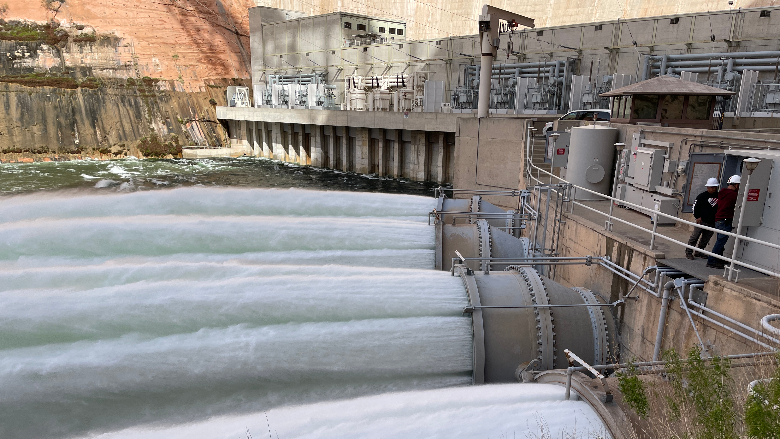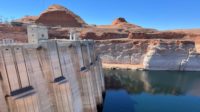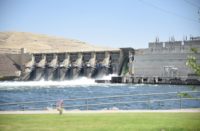Efforts to update near-term guidelines for operations of the Glen Canyon and Hoover dams on the Colorado River system are expected to save at least 3 million acre-ft of water via use reductions through the end of 2026. The U.S. Dept. of Interior’s Bureau of Reclamation released a final supplemental environmental impact statement March 5 with a preferred alternative that officials say reflects a consensus-based approach to addressing the possibility of continued low-runoff conditions in the Colorado River Basin.
The proposed guidelines would allow for cutting back releases from Lake Powell in Utah and Arizona down to 6 million acre-ft if projections show the lake’s surface elevation dropping before 3,500 ft over the following 12 months.
Camille Calimlim Touton, BuRec commissioner, told reporters during a March 4 call that the milestone means the Biden administration “has staved off the immediate possibility of the Colorado River system’s reservoirs from falling to critically low elevations that would threaten water delivery and power production.”
Conservation investments and improved hydrology have already helped Lake Mead’s surface elevation reach 1,075 ft, its highest level since May 2021, according to the bureau. Lake Mead is 29 ft higher than it was a year ago, and upstream Lake Powell is 41 ft higher. However, Powell is still only 34% full and Mead is 37% full.
Forty million people across seven states rely on Colorado River water. Lake Mead, created by the Hoover Dam, is the largest reservoir in the U.S. Lake Powell, created by the Glen Canyon Dam, is the second largest.
Reclamation officials also announced that they had reached three new system conservation implementation agreements in California. They include one with Bard Water District in cooperation with Metropolitan Water District, committing to conserve up to 18,090 acre-ft of water; a second agreement with Coachella Valley Water District committing up to 30,000 acre-ft of conserved water in addition to another agreement with Coachella Valley signed in December; and one with Palo Verde Irrigation District in cooperation with Metropolitan Water District committing to up to 351,063 acre-ft of conserved water through 2026.
Officials say they now have 24 conservation agreements in California and Arizona to conserve up to 1.58 million acre-ft of water with $670.2 million from the Inflation Reduction Act.
Michael Brain, principal deputy assistant secretary for water and science at the Interior Dept., said officials are ready to make additional targeted investments over the coming months in basins such as the Klamath, Columbia and Rio Grande rivers and the Central Valley in California. The Inflation Reduction Act includes $4.6 billion for addressing drought across the West.
The interim operating guidelines for Glen Canyon and Hoover dam operations expire at the end of 2026. Separate negotiations for efforts to protect the Colorado River Basin starting in 2027 are also underway, though ongoing dry conditions remain an issue. Touton said the current agreement frees officials to focus on those long-term conservation efforts. Reclamation officials anticipate completing a draft environmental impact statement this year.
“Supply and demand is an issue we’ll deal with in the future, and we need to take into account innovative solutions,” Touton said. “So as people are developing alternatives, those are the things that we’re looking at so we have a robust set of solutions looking into the future.”






Post a comment to this article
Report Abusive Comment